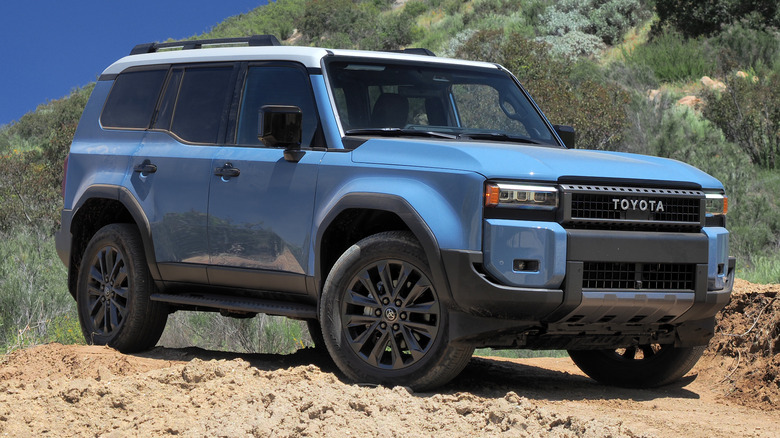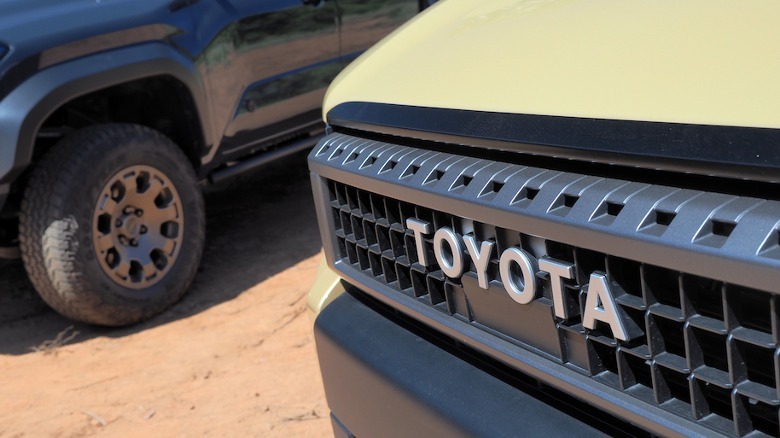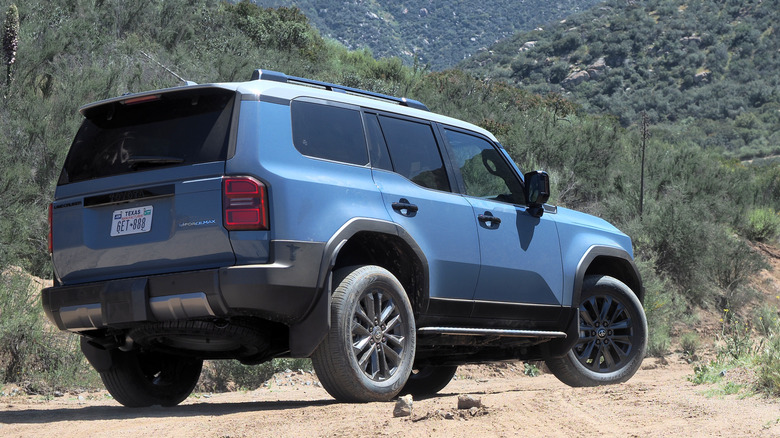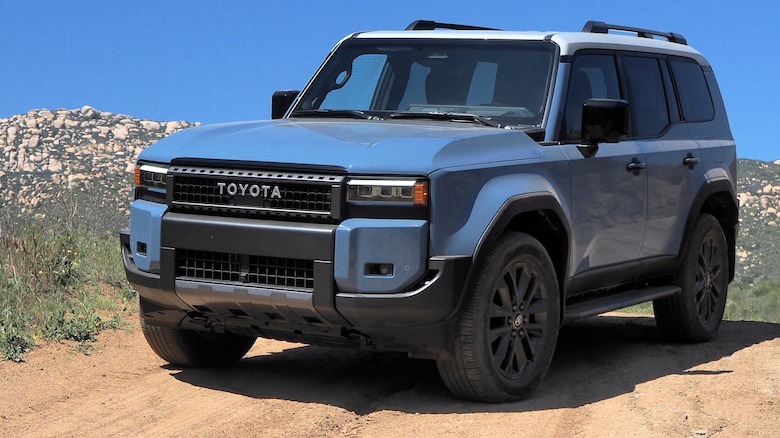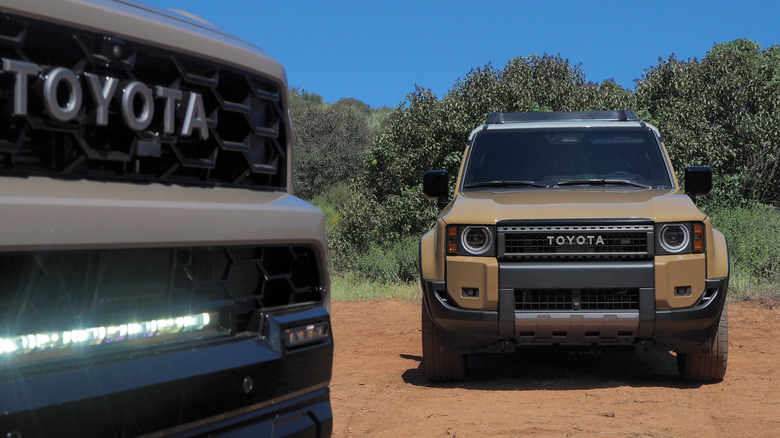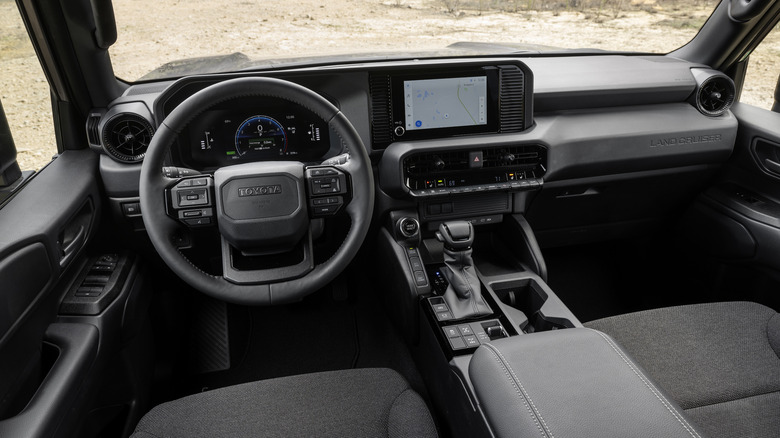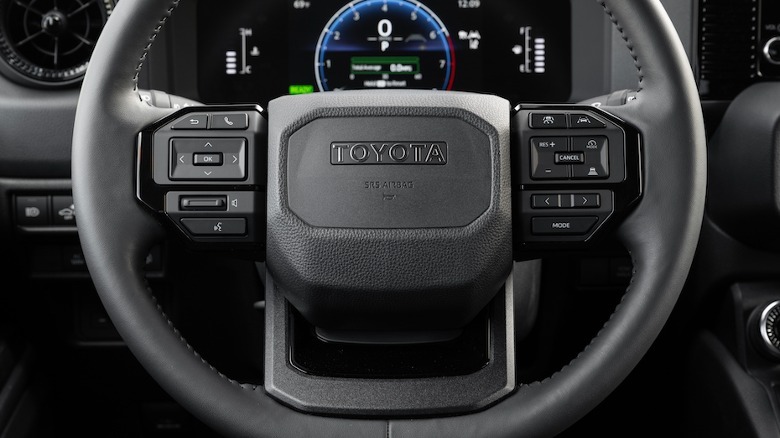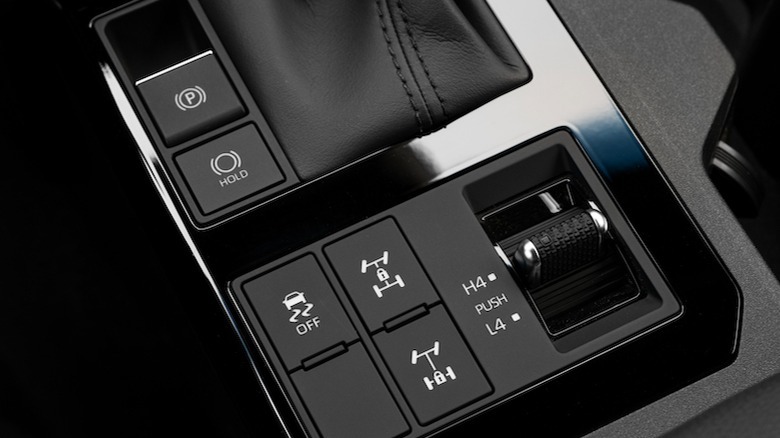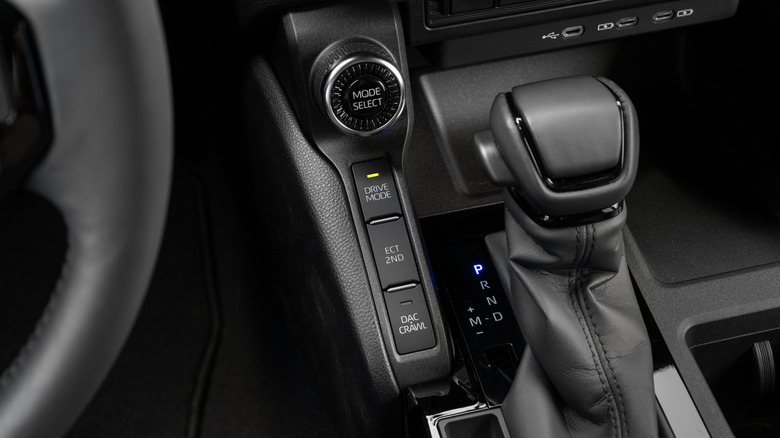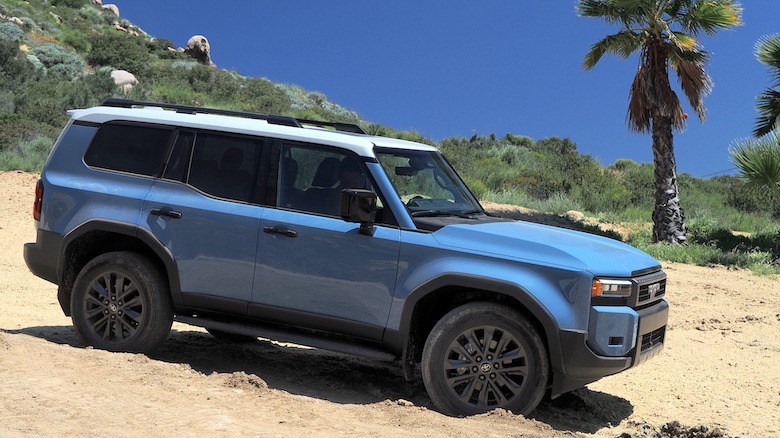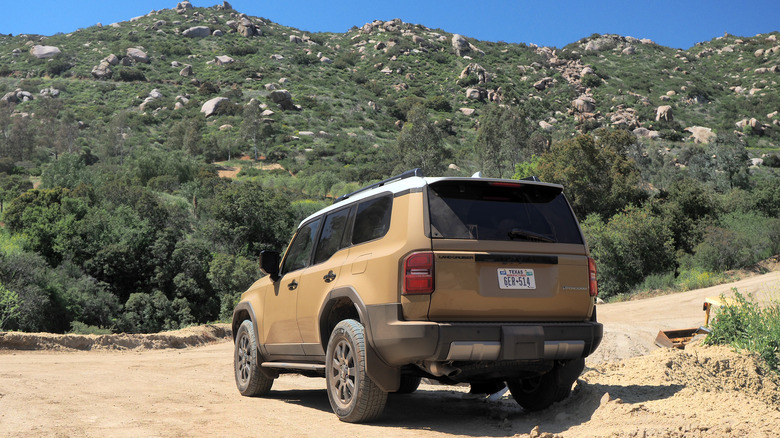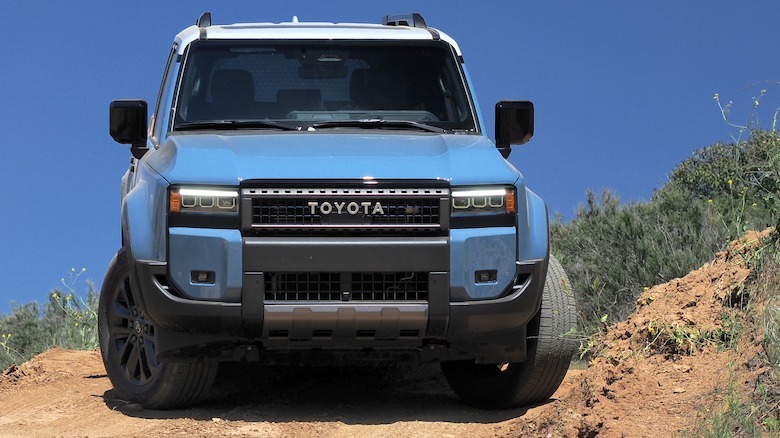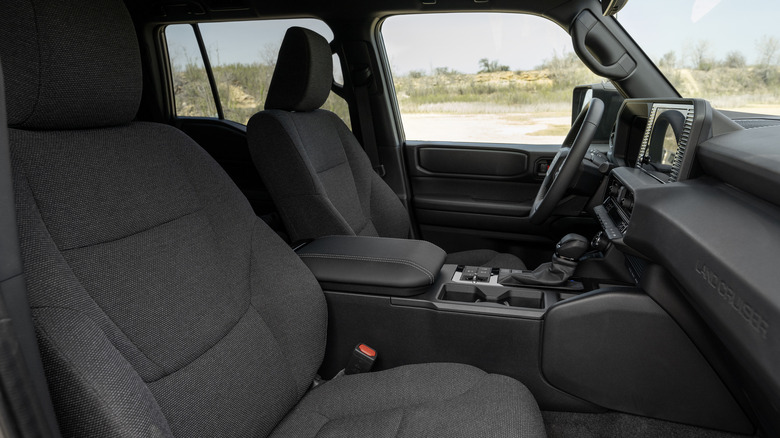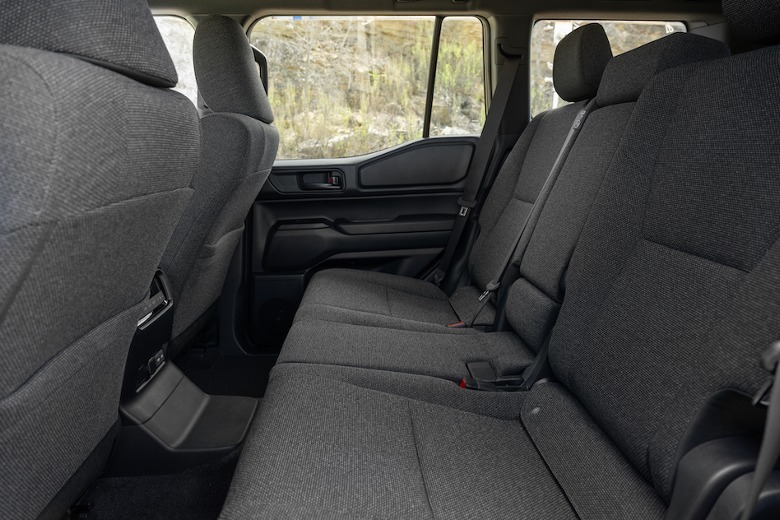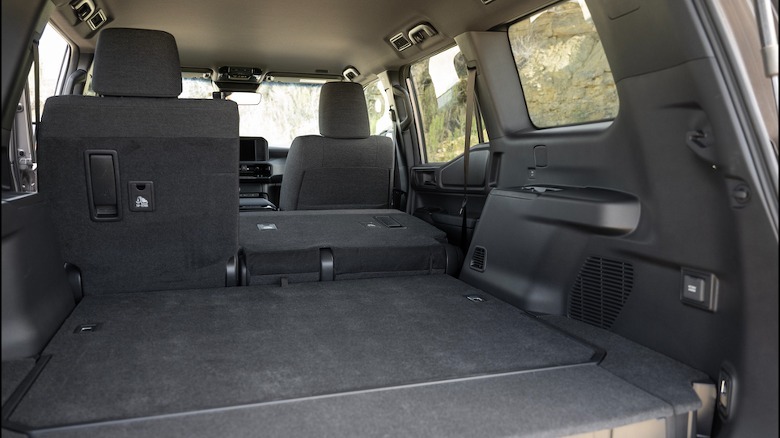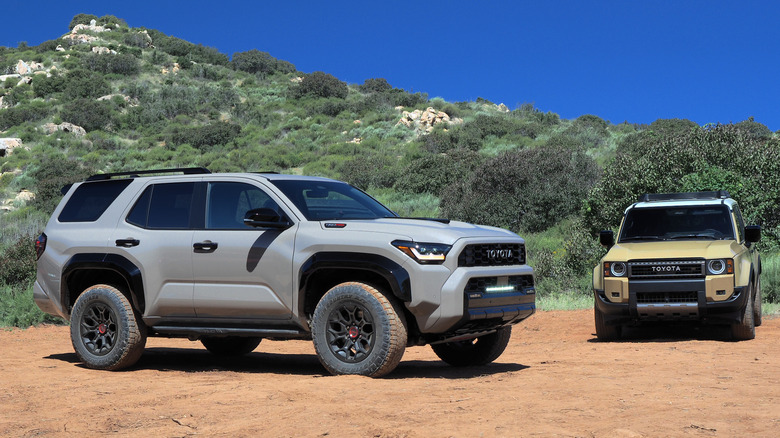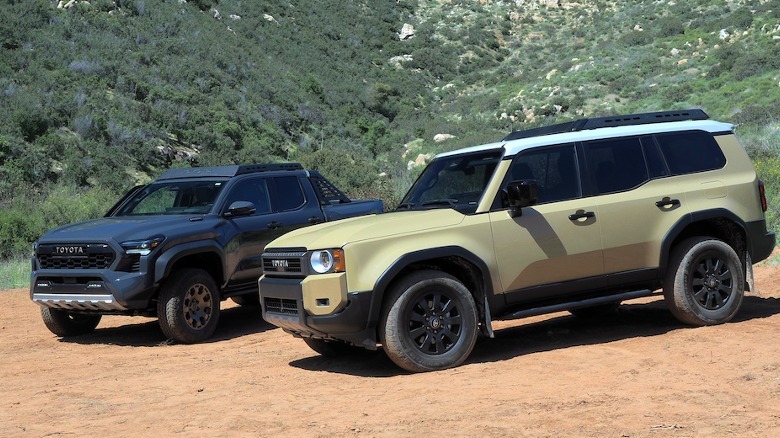2024 Toyota Land Cruiser First Drive: Cheaper And Smaller, But What's Ahead Is Unclear
The Toyota Land Cruiser is back, and it has a whole lot to live up to. Returning to the U.S. after several years of absence, the 2024 Land Cruiser is a nose-to-tailgate reboot built upon the automaker's latest truck platform and tapping the advantages of its clever, frugal-but-potent hybrid drivetrain technology. Yet, while gadgets and gimmicks increasingly sell new SUVs, arguably, they take Toyota further away from what made the Land Cruiser so popular in the first place.
The old Land Cruiser had a reputation for being the go-anywhere, fix-anywhere SUV of choice for environments well away from asphalt. Not for nothing, it is still a commonplace sight in conflict zones, the full-sized truck earning favor for Toyota's combination of practicality and relative simplicity.
The new version of the SUV, though, loads up on complexity as well as angular style. It's based on the same TNGA-F global truck platform as the new Tacoma, Tundra, and Sequoia, though where those models offer a choice of 2WD or 4WD, the 2024 Land Cruiser is full-time four-wheel drive as standard. Pricing kicks off at $55,950 (plus $1,395 destination).
Sharp style and a hybrid under the hood
Toyota's designers probably didn't intend it — or wouldn't admit to it, anyway — but the more I looked at the Land Cruiser, the more I saw hints of Rolls-Royce's Cullinan. At the front, it's the narrow rectangular headlamps flanking that big, blunt grille opening (the 1958 and First Edition trims swap them for larger, circular headlights, reminiscent instead of the Land Rover Defender's). From the back, meanwhile, there is a combination of the rear pillar and fender angles, as well as the squat taillamp clusters.
Whether that's a good thing or a bad thing depends on how you like your SUV. Certainly, it's a marked departure from the old Land Cruiser, which had softer edges and wasn't afraid of a curve or two. That didn't exactly make it memorable, mind, and heads are far more likely to turn if you're driving this 2024 version.
It's the drivetrain that is likely to cause the most consternation, however. No more V8: only a 2.4-liter inline-four turbocharged hybrid, which Toyota dubs the i-FORCE MAX. Here, it's tuned for 326 horsepower and 465 lb-ft of torque and paired with a standard eight-speed automatic transmission.
A huge improvement in economy
As we've seen in other Toyota hybrids, the combination of gas and electric does a few things. Most obvious is the V8-like power with much-reduced thirst. The 2021 Land Cruiser, last offered in the U.S., delivered 381 horsepower and 401 lb-ft of torque from its eight cylinders; while the new SUV is lower in horses, you get its increased torque much sooner in the power band. In fact, the new Land Cruiser's maximum twist arrives at just 1,700 rpm, versus 3,600 rpm in the old V8.
The economy difference is even more shocking. The old V8 was rated for 14 mpg combined; this hybrid Land Cruiser has an estimated EPA rating of 23 mpg combined, along with 22 mpg in the city and 25 mpg on the highway.
It's not all good news, mind. Towing capacity is down, the old V8's 8,100-pound rating dipping to 6,000 pounds on this new, hybrid version.
Built to roam off-road
Unsurprisingly, Toyota's focus when it hosted SlashGear to test out the new Land Cruiser was off-road, not on-road, performance. And the automaker is pulling no punches to make sure the rebooted SUV is as capable as its predecessor, including a lot of the mechanical and electronic tech we've seen on other recent body-on-frame models.
So, center and rear-locking differentials are standard across the board, the latter capable of splitting power 50/50 between the rear wheels. There's an optional front stabilizer bar disconnect mechanism to boost front wheel articulation and an automatic limited-slip differential.
A cluster of new buttons and dials in the center console summons the 2024 Land Cruiser's electronic talents. Multi-Terrain Select includes Mud, Dirt, and Sand modes and now operates in both 4WD High and 4WD Low. Downhill Assist Control is standard, capping the vehicle speed when tackling descending hills, while CRAWL Control is basically very low-speed cruise control for off-road environments.
Plenty of gadgets
Out on Toyota's test course, there was a distinct sense that the Land Cruiser's talents were hardly being stretched near their limits. Some of that, however, could be down to how straightforward the SUV makes tackling such environments.
CRAWL Control — which offers five speeds, controlled by the dial in the center console, and leaves the driver to focus on steering — inches you along at under 10 mph, the Land Cruiser feathering the throttle like a conscientious off-road chauffeur to maintain momentum over rocks and through ditches. It was an opportunity to see how well the various parts of the hybrid drivetrain work together, the electric motor sandwiched in between the gas engine and the transmission contributing seamlessly to the overall sense of more than enough torque.
Approach and departure angles of 32 and 22 degrees, respectively, are certainly better than those of a Sequoia but fall short of the 2024 Tacoma (they match or slightly improve on the old Land Cruiser). More conspicuous, though, are the dire sightlines courtesy of the slab-sided aesthetic.
Beware the base 1958 trim
Much has been made in recent years of the impact SUV and truck styling has had on visibility, particularly when it comes to seeing pedestrians. Out on the trail, though, my concern was less about school kids being swallowed by the Land Cruiser's blind spots and more about slotting its chunky 18-inch wheels between sharp boulders and outcrops.
Toyota throws in some gadgety assistance there, with its Multi-Terrain Monitor (MTM) system. That beams camera views from the front, sides, and rear of the SUV to the infotainment display and can be summoned automatically when the Land Cruiser spots you're on an incline (such as, say, poking your nose over the crest of a blind hill).
It's a bodywork saver at times when you don't have a human spotter, which makes its omission — even as a paid option — on the entry-spec Land Cruiser 1958 a frustrating head-scratcher.
Things are getting expensive
That's not the only spec frustration for Toyota's cheapest trim. The Land Cruiser 1958 also lacks the bigger, 12.3-inch infotainment system touchscreen and the 12.3-inch fully-digital instrument cluster — making do with much smaller 8-inch and 7-inch versions, respectively — despite a fairly hefty $55,950 (plus $1,395 destination) sticker price. There's still wireless Apple CarPlay and Android Auto support, but no wireless phone charger.
The $61,950 (plus destination) 2024 Land Cruiser trim feels much more comfortably equipped, with the bigger displays, SofTex faux-leather seats (replacing the 1958's cloth), both heating and cooling for the front row, MTM cameras, and front seat memory. It also throws in a power liftgate, though Toyota's head-up display, console cool box, wireless charger, power moonroof, leather driver's seat, and upgraded 14-speaker JBL audio are part of an optional $4,600 Premium package.
Toyota pushes the boat out for the 2024 Land Cruiser First Edition. In return for your $74,950 (plus destination) there's the fancier audio and all the other features from the Premium package, along with leather seats, roof rails (with a cargo basket) and rock rails, and heavy-duty mudguards. That said, you're also spending more than the price of a Sequoia Limited 4WD.
It's good, but will it last?
The larger Sequoia will offer more cabin space, too, though those wanting specific off-road talent and three rows of seats will need to hold off until the new Toyota 4Runner arrives later this year. Accommodations in the Land Cruiser's two rows are perfectly adequate and similar in legroom to an RAV4. There's a pared-back simplicity in aesthetic to the upright dashboard, Toyota's designers thankfully eschewing the faux-screw moldings and excessive knurling that it insists on adding to knobs and dials in, say, the Tacoma.
Still, there's a strong sense of familiarity with the Land Cruiser. Toyota's body-on-frame range is feeling more and more crowded, and the imminent launch of the 4Runner will only add to that. On the one hand, choice is usually a good thing, yet at the same time, the arcane trim structure and overlapping product messages are likely to cause confusion at dealerships.
That's before you get to the biggest question, the one that Toyota simply can't answer yet — or, at least, not to the satisfaction of long-time Land Cruiser fans. Longevity and reliability, the foundations on which the SUV's reputation was built, will take time to shake out. After all, while a 3-year/36,000-mile warranty and two years of bundled factory scheduled maintenance are well and good, they're of little use if you break down while out roaming the wilds the new truck claims to be eager to explore. On that front, though charming and clearly capable, this 2024 Land Cruiser still has to earn its stripes.
